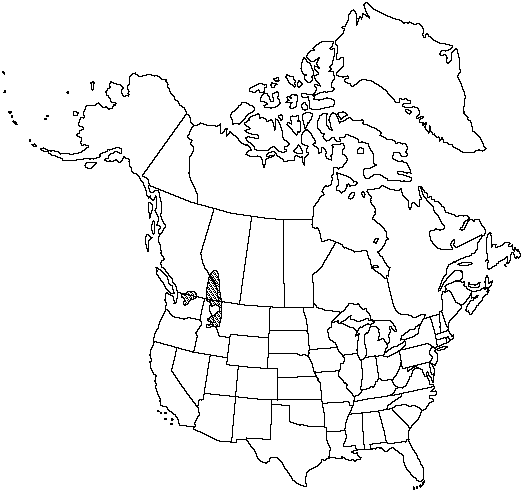Difference between revisions of "Larix lyallii"
Conif. Nov. 3. 1863.
FNA>Volume Importer |
imported>Volume Importer |
||
| (6 intermediate revisions by 2 users not shown) | |||
| Line 8: | Line 8: | ||
}} | }} | ||
|common_names=Subalpine larch;alpine larch;mélèze de Lyall | |common_names=Subalpine larch;alpine larch;mélèze de Lyall | ||
| + | |special_status={{Treatment/ID/Special_status | ||
| + | |code=E | ||
| + | |label=Endemic | ||
| + | }} | ||
|basionyms= | |basionyms= | ||
|synonyms= | |synonyms= | ||
| Line 23: | Line 27: | ||
|elevation=1800–2400m | |elevation=1800–2400m | ||
|distribution=Alta.;B.C.;Idaho;Mont.;Wash. | |distribution=Alta.;B.C.;Idaho;Mont.;Wash. | ||
| − | |discussion=<p>Larix lyallii and L. occidentalis (Larix sect. Multiseriales) are similar morphologically and have similar geographic ranges. Just how closely the two species are related has not been determined, but they probably originated from a common ancestor resembling L. potaninii Batalin. Although the geographic ranges of the two species overlap considerably, elevational differences of 150 to 300m usually separate them. Some morphologically intermediate specimens have been collected from Washington and Montana.</p><!-- | + | |discussion=<p><i>Larix lyallii</i> and <i>L. occidentalis</i> (<i>Larix</i> sect. Multiseriales) are similar morphologically and have similar geographic ranges. Just how closely the two species are related has not been determined, but they probably originated from a common ancestor resembling L. potaninii Batalin. Although the geographic ranges of the two species overlap considerably, elevational differences of 150 to 300m usually separate them. Some morphologically intermediate specimens have been collected from Washington and Montana.</p><!-- |
--><p>Because of its restricted distribution and growth at timberline, alpine larch has no commercial importance; it is often dwarfed and misshapen.</p> | --><p>Because of its restricted distribution and growth at timberline, alpine larch has no commercial importance; it is often dwarfed and misshapen.</p> | ||
|tables= | |tables= | ||
| Line 33: | Line 37: | ||
-->{{#Taxon: | -->{{#Taxon: | ||
name=Larix lyallii | name=Larix lyallii | ||
| − | |||
|authority=Parlatore | |authority=Parlatore | ||
|rank=species | |rank=species | ||
| Line 46: | Line 49: | ||
|publication title=Conif. Nov. | |publication title=Conif. Nov. | ||
|publication year=1863 | |publication year=1863 | ||
| − | |special status= | + | |special status=Endemic |
| − | |source xml=https:// | + | |source xml=https://bitbucket.org/aafc-mbb/fna-data-curation/src/2e0870ddd59836b60bcf96646a41e87ea5a5943a/coarse_grained_fna_xml/V2/V2_425.xml |
|genus=Larix | |genus=Larix | ||
|species=Larix lyallii | |species=Larix lyallii | ||
Latest revision as of 20:23, 5 November 2020
Trees to 25m; trunk to 1.2m diam.; crown sparse, conic. Bark furrowed and flaking into red- to purple-brown scales. Branches horizontal, occasionally pendulous, persistent on trunk when dead; twigs strongly white- to yellow-tomentose for 2–3 years. Buds tomentose, scale margins ciliate. Leaves of short shoots 2–3.5cm × 0.6–0.8mm, 0.4–0.6mm thick, keeled abaxially, 2-angled adaxially; resin canals 40–80µm from margins, each surrounded by 6–10 epithelial cells. Seed cones 2.5–4(–5) × 1.1–1.9cm, on curved stalks 3–7 × 2.5–4mm; scales 45–55, margins erose, abaxial surface tomentose; bracts tipped by awn 4–5mm, exceeding mature scales by ca. 6mm. Pollen 78–93µm diam. Seeds yellow to purple, body 3mm, wing 6mm.
Habitat: Subalpine talus slopes
Elevation: 1800–2400m
Distribution

Alta., B.C., Idaho, Mont., Wash.
Discussion
Larix lyallii and L. occidentalis (Larix sect. Multiseriales) are similar morphologically and have similar geographic ranges. Just how closely the two species are related has not been determined, but they probably originated from a common ancestor resembling L. potaninii Batalin. Although the geographic ranges of the two species overlap considerably, elevational differences of 150 to 300m usually separate them. Some morphologically intermediate specimens have been collected from Washington and Montana.
Because of its restricted distribution and growth at timberline, alpine larch has no commercial importance; it is often dwarfed and misshapen.
Selected References
None.